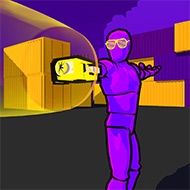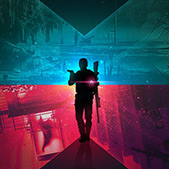KLITTER challenges perception and control through an intricate network of particles, energy links, and reactive physics. It’s a puzzle experience built on chaos theory, where every move can trigger cascading effects across the grid. The core idea of KLITTER lies in balancing precision with unpredictability — you manipulate glowing orbs, redirect energy beams, and stabilize unstable clusters before they implode.
Each level feels alive, shifting dynamically with your input, forcing you to think in patterns rather than steps. KLITTER rewards patience, foresight, and experimentation as you build energy systems that defy gravity and logic.
Energy Mechanics and Reaction Control
At its foundation, KLITTER uses a chain-reaction system where every connection has consequences. Players link orbs of similar frequency to form stable fields while avoiding overloads. A miscalculated link can cause the network to collapse, forcing a complete rebuild.
Later levels introduce gravitational distortion, magnetic pulses, and color-coded resonances that change the way energy behaves. Unlike traditional puzzles, KLITTER’s gameplay feels more like engineering: understanding balance, direction, and timing within a living mechanism. Success requires precision, but also adaptability as environmental variables shift unpredictably.
- Connect matching nodes without allowing circuits to cross or overload.
- Control the intensity of energy flows using adjustable rotators.
- Counter magnetic interference with stabilizers and deflectors.
- Analyze movement patterns to anticipate reactive surges.
Advanced Tools and Level Evolution
As you progress through KLITTER, you’ll unlock advanced instruments such as reflectors, dampeners, and amplifiers. These tools let you manipulate space and delay reactions, introducing deeper strategy layers. Each new stage incorporates modified rules — sometimes gravity reverses, sometimes energy spreads through unstable materials, and sometimes time becomes a limited factor.
The deeper you go, the more you realize that KLITTER is not only about completion but mastery of its system. Players can replay earlier levels to achieve perfect synchronization scores or explore alternate pathways for hidden bonuses.
- Use reflectors to redirect unstable energy safely.
- Deploy amplifiers strategically to multiply output chains.
- Experiment with timing to delay unavoidable reactions.
- Seek alternate solutions that yield higher efficiency ratings.
Strategies for Complex Scenarios
Every world inside KLITTER behaves differently. Some environments feature shifting gravity, while others simulate heat expansion or magnetic drift. To survive higher stages, you must plan energy movement several steps ahead. Learning to control chain reactions is crucial: one stable node can prevent total system collapse.
In competitive modes, you race against time or AI-controlled entities that adapt to your movements. Observation and precise timing separate skilled players from casual ones, as a single misalignment can trigger system-wide destruction. The game’s procedural variation ensures that each run feels unique.
- Predict reaction timing to stabilize networks before collapse.
- Learn environmental modifiers to control system behavior.
- Master time-delay functions to neutralize unstable links.
- Optimize node positioning for chain completion efficiency.
The Flow of Mastery and Endless Challenge
KLITTER evolves constantly as you improve. The pacing intensifies, the field expands, and the particle density increases. Mastery involves rhythm, observation, and creative thinking rather than memorization. Some levels act as pure sandbox zones, where you can test theories and explore alternate strategies without penalty.
The more you understand the cause-and-effect logic, the more control you gain. Eventually, managing chaos becomes second nature, and the symphony of reactions turns into a satisfying flow. With dozens of stages and endless replay potential, KLITTER remains engaging long after completion.
KLITTER invites players to embrace complexity, react under pressure, and enjoy the satisfaction of turning unstable systems into perfect harmony. It’s both a challenge of intellect and a test of reflexes, rewarding those who seek logic within chaos.















































































